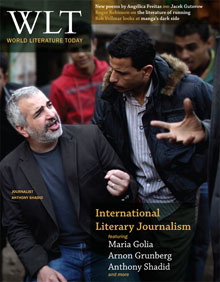The Rivered Earth by Vikram Seth
New Delhi / London. Penguin / Hamish Hamilton. 2011. ISBN 9780670085415 / 9780241144916

“The hermit sits upon the ice. / The bluish light burns all around, / Immune to flame and sacrifice, / To breath and death and scent and sound.”
Whether it is the English countryside where an oak in the “water-meadow” is surrounded by a pool; or verse fragments from chant-inflected Dhammapada; or Krishna in Bhagavad Gita: “I am the spark that brings life to all living things”; or the “Seven Elements” creolized “Fire”: “O fayah—fayah—fayaaah / Dizayaah / Hot hot hot” and its tongue-tipped energy—Vikram Seth’s The Rivered Earth reveals the inner workings of an intimate artist we haven’t publicly seen in print before. Private-public worlds intermingle, interweave, interleave, and unravel in the most appealing and seductive way, a way that only a deeply sensitive poet can illumine.
To fully reap the fruits of Seth’s innovative The Rivered Earth—“a phrase from the last of the libretti”—it is helpful if one is familiar with the arc of his artistic history. Each of Seth’s books differently employs various genres—pure poetry, children’s verse, narrative novel, novel-in-verse, travel writing, memoir, libretto, and translations. Beyond India, England, and China, this new collection is a book about friendship, love, loss, drama, history, geography, literature, and the musical collaboration with composer Alec Roth and violinist Philippe Honoré.
The Rivered Earth hums with introverted echoes of The Humble Administrator’s Garden (1985), From Heaven Lake (1983), Three Chinese Poets (1992), An Equal Music (1999; see WLT, Winter 2000, 241), and more. A wide spectrum of personal experience and literary influences sing in his translations and original creation. It consists of four libretti composed to accompany music by Alec Roth—together with accounts of the pleasure and pain of collaborative art—and written with the deliberate consciousness that the “writing had to be sung.”
Also contained are exquisite pieces of calligraphy by Seth—Chinese characters; cursive Roman handwriting of “Oak” that reflects the shape of Herbert’s “Easter-Wings”; a hand-scripted Surdas poem in Brajbhasha (a variant of Hindi); and a roundel in Arabic. Endpapers are carefully chosen, imprinting excerpts from “Ponticelli” by Roth. The cover photograph is Seth’s own—the misty grounds of Bemerton’s Old Rectory.
The book displays the prismatic Seth—in monochrome, sepia, and full-color bleeds; as an interviewer, travel writer, essayist, theorist, poet, translator, artist, thinker, and more. It is the way the content is executed—without the stultified academic tonality that usually mars clichéd forewords—that is most appealing. Introductions and notes take the form of creative nonfiction and prose meditations with wonderful insights on background and context, plus delightful trivia adding to its rich texture.
Seth’s book encompasses the micro and macro in detailed vividness. It is as much a book of poems as it is a vast score-sheet, one that is reminiscent of miniature paintings—full of motet, suite, partita, sonata, bariolage, and coda. The Rivered Earth is touched by the brilliance of a poet. It is a subtle-scented bouquet from a master craftsman, a true polymath.
Sudeep Sen
New Delhi


